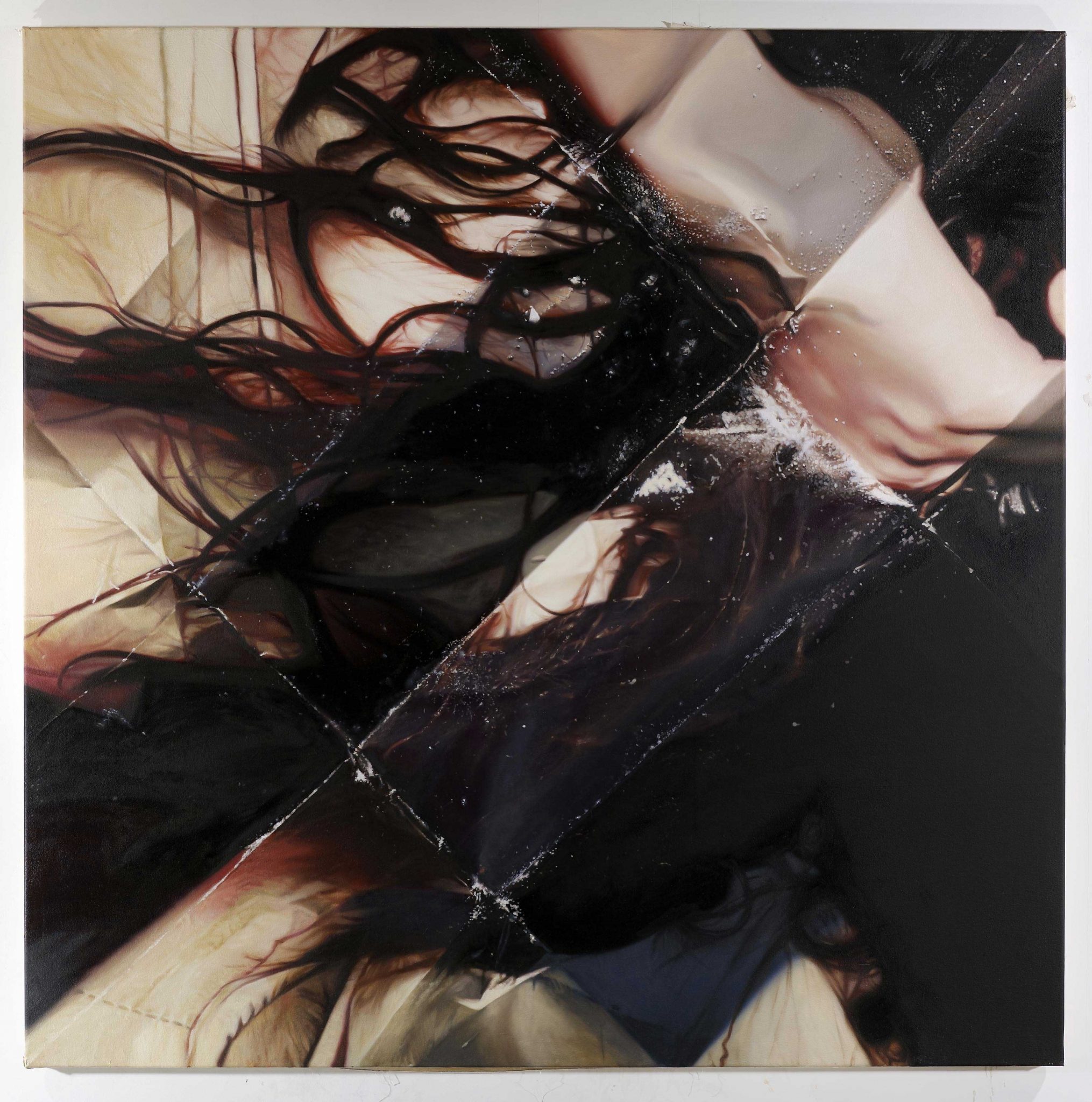This Is Not an Exit refers to the last line of Bret Easton Ellis’s novel American Psycho (1991), about the aftereffects of the 1980s financial boom on Wall Street. YBA Mat Collishaw, like the American novelist, has earned enough credits to speak convincingly on the trappings of late capitalist society. Alone in the gallery with his new almost- photorealist paintings of what could be narcotic wraps – after the private-view party people have gone – one’s mind is not actually occupied with notions of bad-boy hedonism offered here. Rather, it’s occupied with what has prompted Collishaw to return to painting, having spent most of his career so far reconfiguring the medium’s tropes through comparatively distanced technological means.
The exhibition features two series of figurative paintings depicting unfolded sections of paper, of both the plain kind and pages from fashion/men’s magazines, coated in traces of white powder. As promised, there are no pictorial escape routes: each composition could extend indefinitely from its rhomboid or square canvas, while the viral spread of powdered matter draws one from the depth of field created by the painterly illusion of folds and magazine motifs – model limbs and interior details origami’d into nonsensical narrative jigsaws – to the image surface. The melding of different glossy-mag sensibilities brings to mind the question of what separates one sexy sales pitch from another in commercial publishing. Up close, however, they do not look like photographs: each plane appears to break down into squirming, germy swatches of many painted marks.
The literary line ‘This is not an exit’ is arguably now as iconic as the exhibition subject territory (the mis- or overuse of substances and imagery) is obvious. The borderline gauche manner in which Collishaw wades into contentious issues or well-fielded debate is exactly what prevents this exhibition (as opposed to Shooting Star, the artist’s 2008 show at Haunch of Venison, with its projections of Victorian child prostitutes) from drowning in the moral mire. The issues here, concerning social and fiscal responsibility, appear little more than a means of bringing one to the picture to engage with painting: the fact of his renewed love for the process and its influence on today’s culture of images. For Collishaw seems to acknowledge, through much and impressive evidence of painterly homage – from the folds of Jan van Eyck drapery to the muted Giorgio Morandi tones of exquisitely realised grey, lilac and buff sheets of paper – that the way, in terms of how we ‘read’ images, has been paved and repaved.
Many of the theories underpinning photoreal painting may already be firmly established, a fact well underlined by the Hayward Gallery’s Painting of Modern Life exhibition back in 2007, but as Collishaw highlights here, it’s not as if we are impervious to the power of the lens- derived image as a result. Marshall McLuhan’s 1967 mantra on medium as message remains acutely relevant to the digital present. Collishaw’s nods here to master image-makers affirm the lure of the past in the technologically complex present, all the while alerting one to the fact that the rules of engagement have changed. The skin of a lone disembodied hand waving on one canvas momentarily recalls Richard Hamilton’s silkscreen Swingeing London 67 (1968–9). Yet this is no depiction of the fuzzy newsprint view from a paparazzo’s lens, but one from the postproduction studio, evoking the smooth liquidity of the airbrush and the glossy gloop of modern makeup.
This article was first published in the April 2013 issue.
